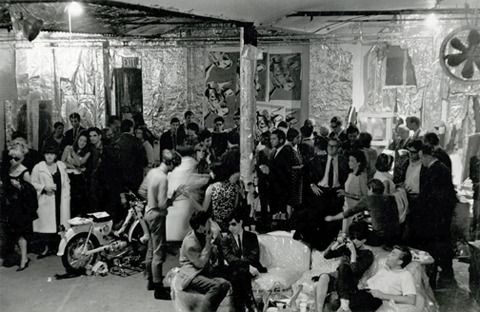Elizabeth Chodos
For this first in a series of blogs about the anatomy of the visual art world, I’ll cover some basics about commercial galleries. They’re a good entry point into understanding the overall ecology of how artwork is seen and distributed today.
For the most part (and there are always exceptions) a commercial gallery’s structure is relatively straightforward–the dealer/owner usually assisted by one or more gallery directors locates artists whose work is both compelling aesthetically and intellectually, but can also fair well in the market. This is a delicate and complex relationship between ‘quality’ and ‘marketability’, that involves taste, savvy, and a healthy collector base with comparable taste and savvy, and in addition, the wealth to support it. Really serious blue chip collectors have a very unique and rarified personality profile. But then again, collectors come in all shapes and sizes. Lot’s of artists and arts professionals have sizable collections of art work, some of it given to them by friends, some of it purchased at (frequently criminally low) prices at benefit auctions, but for the most part the high end commercial galleries are sustained by collectors who are both wealthy and wise.
Relationships between dealers and collectors often look more like friendships than business relationships. Sales are as frequently conducted over a cocktail as they are across a desk. It’s a social world, where the lines between personal and professional are almost not existent. In fact, I would venture to say that this socializing is the one thing that permeates the entire art world, and is definitely not an exclusive feature to the commercial gallery network.
The fact that the art world is aggressively social is so obvious it almost seems pointless to mention it, but it really is about who you know, and not necessarily in a bad way. The systems out there for doctors, lawyers, etc. are fully-fledged, highly functional and will bring an 18 year old through college, a graduate degree, and into a job. There’s just nothing that really compares to that in the art world, and if it is there, it barely supports the number of artists and arts professionals who would rely on it, so you have to be resourceful, and you have to do a lot of your own navigating. The social fabric is one of the primary things holding the arts together so the best thing you can do is go out and meet people.
Above I said that some mixture of perceived quality and salability is what informs a dealer’s decision to exhibit and try to sell a work of art, but really I have to admit that’s over simplifying things. It’s basically true, but the way these decisions are made resides on a spectrum, on one end there are dealers who privilege the market above all else and who care less about whether or not the work is ‘good’ and there are other dealers who care much less about whether they can sell the work, but want to help artists realize ambitious projects that could never sell. In essence there are some commonalities between the majority of commercial spaces, but at the end of the day there are as many different types of commercial galleries as there are dealers.
Commercial galleries might be one of the last examples where personal eccentricities, and the wants and whims of a particular business owner haven’t totally crumbled under the weight of a homogenizing industry. Dealers identify with the galleries they own and run. That’s why for the most part, the names of galleries are the names of the people who own them–the business is an extension of themselves.
I think that the best way to know if you should show at a gallery is to get to know the fine people who run it, and see if you are a good fit for their professional/personal profile. If I had any advice to offer a young artist just getting a start, it would be to spend as much time as is humanly possible making art, and when your not doing that, or working a day job, master the art of being a good conversationalist and companion, and go to every opening and every party, and eat well and drink lots of water, so you don’t keel over in the process.



